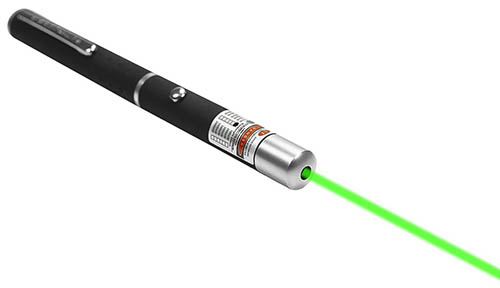Rules for using a green laser pointer
Use these guidelines to keep everyone safe when using a green laser pointer for stargazing and astronomy.
Don't use a stronger power than you need.
- For amateur astronomy 5 mW is enough1. This is actually a fairly safe power and it's unlikely to cause injury, but it still makes sense to follow all these guidelines.
No unqualified people are to use the pointer.
- Only people who have been instructed on the rules.
- Only give a laser to people who can be trusted to act safely.
- Pointers should not generally be used by children. You may feel comfortable with an adult and child holding a pointer together, but be mindful that children are likely to try and point the laser in random directions without warning. For maximum safety we recommend no children.
Only point it at stationary objects in the sky.
- Never point it at anything on Earth—it's only for pointing upwards at celestial objects. Obviously you shouldn't point green lasers at people but lasers can also reflect off other objects and into people's eyes, so stick rigidly to the rule of "objects in the sky only".
- Only point at objects you have positively identified. If you're not 100% sure that you're looking at a celestial object (star, planet, etc), don't point at it.
- Never point it at anything moving in the sky, even if you're sure it's not a plane.
Treat the laser like a firearm.
- Use the same precautions as you would with a gun, e.g. Never look down the barrel, don't point it at people even when it's turned off, etc.

Previous: Laser pointers | Next: Tutorial home page
Footnotes
[1] Laser classes American National Standards Institute 3a or International Electrotechnical Commission 3R
